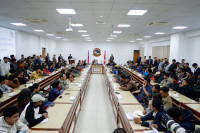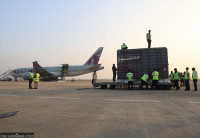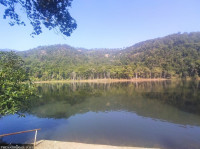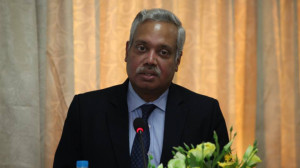National
Historic palaces in Doti lie in dilapidated condition
Due to apathy of the government, sites carrying immense historic and archaeological significance in the district are on the verge of extinction.
Mohan Shahi
One such site happens to be Doti Palace located at Ganairgaunda hill in the district headquarters Dipayal.
Built during the reign of King Bhupati Shah, all administrative works of the state were conducted from this palace. It was only after the then King Deepshahi was defeated by the Gorkhali Army led by Amar Singh Thapa in 1847 BS that the large and powerful state of Doti became a part of unified Nepal.
However, the historic palace is in ruins due to the apathy of the concerned authorities. Only the foundation and walls of the palace remains as a reminder of the palace’s former glory. Moreover, in the absence of conservation, the palace has been ripped off its beauty and elegance, while the tunnel route used by King Deepshahi’s queen to reach Seti river for a bath has already been buried. Although the authorities had come up with a programme for the reconstruction and conservation of the palace, it had to be shelved due to the lack of budget, said Prem Shah, former Vice-Mayor of Dipayal.
“When we requested the Department of Archaeology to conserve the palace, it turned down our proposal stating that they would not invest in the conservation of palaces as they were unproductive,” Shah said.
Another palace of historic and archaeological significance at Nirauli VDC built by Rajbanshi King Nirayapal of Chandpur (he had seized control of Ajmeru, the historic Capital of Doti) shares a similar fate. The three-storey palace has been reduced to half, clearly losing its former glory. Although it is believed that the palace contained ancient ‘Shilapatras’, no one knows who has taken them.
“The government has done nothing for its conservation, but what is most unfortunate is that the descendants of the royal family who live in the district should have done something for its conservation, after all it was built by their forefathers,” said Padam Singh Bam, chairperson of the Consumers Rights Forum, Doti. Stressing that it was the responsibility of the government to take care of historic and archaeological sites, Bam said that the history of the Far West itself was at stake.
Similarly, the palace at Mangalsen, Achham, which is designed like Hanumandhoka Durbar in the Capital, also remains in ruins. The grand palace spanning 20 metres in length and 16 metre wide with 33 rooms was sold off to the government in the year 1958 by the heirs of the Achham King at a mere Rs 80,000. The palace was bombed and destroyed during the insurgency as the District Administration Office had been using the palace for official purpose. Although the government had allocated Rs 22.5 million for the reconstruction of the palace in the year 2008, it is yet to be completed. According to the contractors, lack of timber essential to restore the palace to its former glory had impeded its reconstruction.
Meanwhile, the dilapidated condition of Garva palace with 83 windows and 53 doors built during the Rana regime in Khairala, Kailali is also a cause for serious concern.
The palace built by Khadak Shumsher Jung Rana in 1982 BS was constructed within three years by special craftsmen brought from India. Due to a lack of conservation, the historic palace also known as ‘Shamsher Jung Durbar’, which is spread over 10 ropanis of land has been reduced to rubble while its walls full of artistic paintings are falling apart.




 6.12°C Kathmandu
6.12°C Kathmandu















